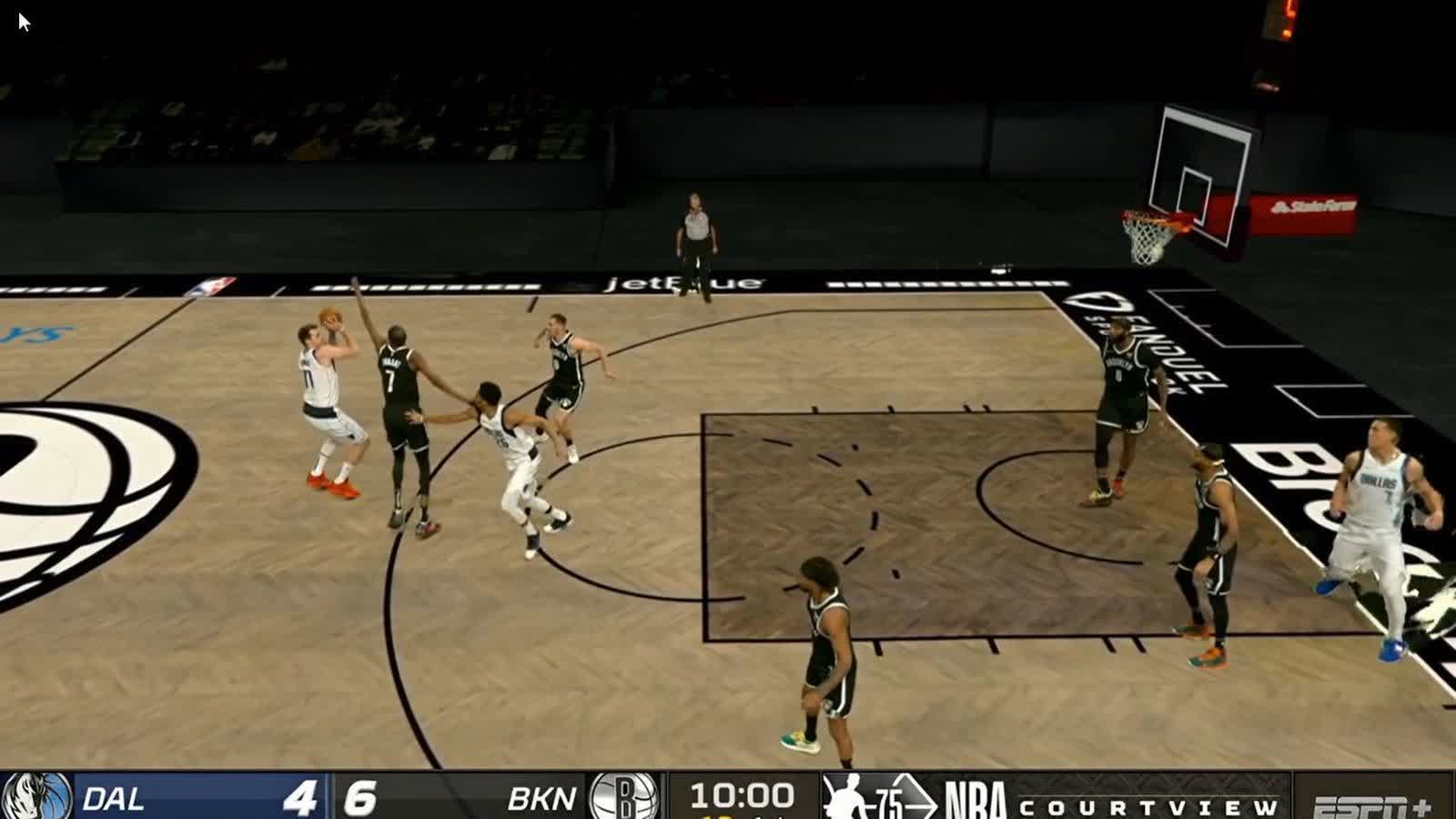Why it matters: As companies continue to scramble to get in on the ground floor of the metaverse, we see moves even from non-tech players to buy into the concept. While the NBA has not announced plans to air virtual games in the metaverse, its "Netaverse" technology sure indicates that it might be thinking about it.
Last night, the NBA became the first organization to broadcast an entire game in a format it calls "NBA CourtView" or "Netaverse." The latter nickname plays off the term metaverse because it delivers content in a virtual 3D environment, but its technically called volumetric video. The tech used is not new. It's previously been used to allow commentators to outline and explain singular replays, but this was the first time the NBA used it to broadcast an entire game.
Luka's buckets are even more spectacular in our NBA CourtView broadcast!
--- NBA (@NBA) March 17, 2022
Live on ESPNEWS pic.twitter.com/sWcqRHX45K
The tech, called "Free-Viewpoint Video," was developed by imaging pioneer Cannon. It uses 110 cameras placed around the basketball court to capture player movement. A computer uses data collected from the cameras to generate a three-dimensional rendering of the players and the court in real-time. This technique lets the operator change angles on the fly. It also allows the camera seemingly free 360-degree movement as if it were a drone cam flying around the stadium.
Luka Doncic's sick half-spin via NBA CourtView!
--- NBA (@NBA) March 17, 2022
Watch NBA CourtView on ESPN+ and ESPNEWS pic.twitter.com/tHyUn95XDc
The imaging tech is not perfect. Glitches, video artifacts, and stutters give away the illusion. Even without the video artifacts, the action teeters on the edge of the uncanny valley. It looks sort of real, but the lack of shadows and reflections cues the mind to know that something is not quite right---like you are watching somebody play an older NBA video game or something. The tweets above give you a general idea.
The NBA did not air the game using volumetric video on ESPN's network station, but viewers could watch it on ESPNews or ESPN+. Interestingly, this technology could lend itself to watching live games in the metaverse as if you were there, but the NBA, ESPN, and Cannon have not confirmed they are looking to go in that direction.
